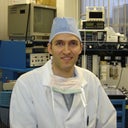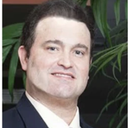Posted underFacial Fat Transfer q&a
How long do fat transfers usually last? And can PRP help it last longer?
Is the procedure done under general anesthesia or can it be local? How long can it last and what prolongs its half life? Can prp help? I also read somewhere that even if the fat goes away, 1/3 remains. Is this true? Does that mean if it's done multiple times it will last longer?
Answers (9)
From board-certified doctors and trusted medical professionals

Dr. J. Kevin Duplechain, MD, FACS
Board Certified Facial Plastic Surgeon
Answer

Dr. Afshin Farzadmehr, MD
Dermatologic Surgeon, Board Certified in Dermatology
Answer
More Facial Fat Transfer Questions
See all Facial Fat Transfer Q&AWE SEND PRETTY
EMAILS
What’s trending? Who’s turning heads? Which TikTok myths need busting? We’ve got you. No fluff, no gatekeeping—just real talk. Get our free, unfiltered newsletter.




